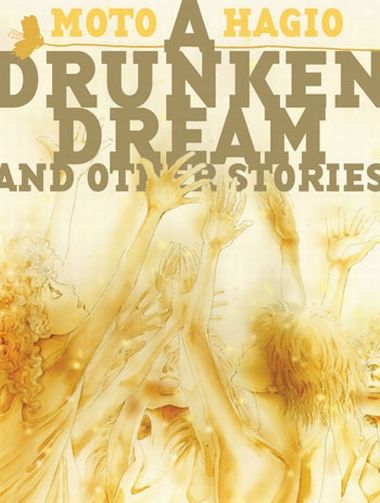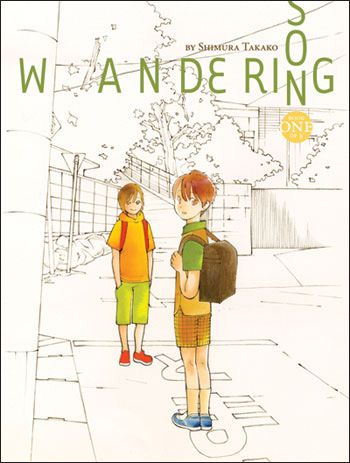Like a number of online alt-comix pundits, the announcement earlier this month that Fantagraphics was going into the manga-publishing business both intrigued and delighted me. So much so that I took it upon myself to email manga scholar and translator Matt Thorn, who is serving as the editor for this line (if such a term can be used) of books. I sent him a list of questions, which (due to his understandably busy schedule) he was only recently able to reply to:
Four years is a long time to sit on a project like this. Why was there such a long gestation period?
It simply took that long to go from Dirk Deppey and me proposing the line to Gary Groth, to going through the process of acquiring rights, and doing all the other things we needed to do before we could make the announcement.
Will this be a separate imprint within Fantagraphics, similar to the Viz Signature/IKKI line, for instance?
At this point, no, but depending on how the first few titles go, I assume a separate imprint is a possibility. I'm not sure that would be the best way to go, though, because we simply want to provide good, literary sequential art, and I don't want a situation where potential readers will simply glance at the imprint, think, "Oh, more manga," and pass it by without even picking the book up and giving it a look.
For the benefit of those who aren't familiar with her work, can you provide a quick biography of Moto Hagio and explain why she's so important?
Hagio made her professional debut in 1969 in Kodansha Publishing's girls' magazines Nakayoshi and Shoujo Friend, where she struggled to come up with short stories that her editors did not think were too far out there. In 1971, she was scouted by a visionary editor at Shogakukan Publishing named Junya Yamamoto, who gave her free reign to do all crazy things no one had ever thought of doing before.
One thing her stories never were is straightforward boy-meets-girl love stories, though romance was an element in most of her work. She is associated with the rise of "boys' love," science fiction and fantasy in girls' manga, but to my mind her great contribution was her sublime and complex themes, for which those genres simply provided motifs and backdrops.
Obviously, gender is a major theme in her work. But another theme that tends to be overlooked is family dysfunction, and the fragile and volatile nature of human bonds. Characters in her works are often bound together by strange circumstances, usually beyond their control. "And they lived happily ever after" is not a typical ending for a Hagio story. A more common ending would be, "And they somehow muddled through; or maybe they didn't." I find it hard to concisely summarize Hagio's contribution to the form. One simple indicator, though, is the fact that practically every female manga artist who has done literary, important work in the past thirty years points to Hagio as a major influence.
How did you go about selecting stories for "Drunken Dream?" Did you consult with Hagio at all while putting the book together?
I did consult with Hagio. I also did something a bit underhanded. There's a popular SNS [short for Social Network Service] in Japan called Mixi, and it has a large and enthusiastic Moto Hagio Community. I started a thread there in 2008 asking, "If you were to make a single volume of Hagio stories designed to introduce Hagio and her career to English readers, what stories would you include?" I posted it as a "hypothetical exercise," but the response was incredible. And the final list of stories that made it into "A Drunken Dream" is actually very close to the consensus reached in that thread. After the news broke, I 'fessed up and thanked the community members for their input. They're all quite happy about the project.
Can you go into a bit of detail about Wandering Son? What made you choose to translate this particular series?
Wandering Son, in a nutshell, is about two fifth-graders: a boy who wants to be a girl, and a girl who wants to be a boy. I just love this work. It rings true, yet is so lovely. And Shimura's art is so clean and lovely. I suppose it's not a popular word these days, but "lovely" is the word that comes to mind. I'm currently reading Anne of Green Gables for the first time, because Wandering Son makes numerous references to Anne, and I'm picking up a similarly lovely vibe. Very real, not glossing over the less lovely aspects of existence, but presenting them with a sensitivity that leaves you feeling happy to be human, despite all the nasty stuff life can throw your way. Wandering Son is sweet, thought-provoking, funny, and moving, and I think it will resonate with readers regardless of their gender identity or sexual orientation.
Can you reveal any other titles planned beyond "Drunken Dream" and "Wandering?"
Nope. Although it can't hurt to say we're hoping to do more Hagio, and fairly confident that we'll be able to.
What is your ultimate goal with this line of manga? How do you see it as separate from what, say, Viz or D&Q is doing?
My goal is to make a line that will appeal to the twenty-something Sailor Moon/Pokémon generation that feel they've outgrown the bulk of what is currently available, and that will also appeal to intelligent grown-ups who just enjoy a good read, but have never seen themselves as readers of manga, or even comics. I'd like to provide these people with smart, high-quality, accessible manga.
But there is another aspect to this line, and that is, to put it simply, the Gary Groth side. These will be works that fit in so well with the original work Fantagraphics publishes that readers might not realize they are reading manga, except for that whole reading right-to-left thing. That "Gary Groth" side (which isn't represented in this first batch, but will be in the second) will have a lot in common with what D&Q is doing, but that is true of much of the non-manga work, too. It's not as if Fanta and D&Q are battling each for customers. The art comics market just doesn't work that way.
As for Viz, we are getting a lot of cooperation from them, and we will be consciously avoiding the markets they have carved out. This isn't hard to do, since anything published by Shogakukan or Shueisha that we would be interested in would requires the go-ahead from Viz.
Translating "classic" manga seems to be a tricky business here in the US. Is that a concern for you at all? Who do you see as your audience for these books and how are you and Fanta planning on getting copies in their hands?
I guess I've already answered the second question. As for the first, yes, it is tricky, and we have the benefit of being able to learn from the mistakes of others (though we'll no doubt make many of our own). But for classics, we'll be applying the same yardsticks we would for contemporary manga, and those are, again, the "Gary Groth" yardstick, and what you could call, for want of a better term, the "Matt Thorn" yardstick. (I suppose the hybrid would be the "Dirk Deppey" yardstick.)
We won't be publishing anything simply because it was a big hit or made waves Way Back When. This is tricky for me, because I'm a manga historian, and the old manga that send a Chris-Matthews-style chill up my leg tend to do so because of their historical value. But I've had plenty of experience forcing my Japanese students at Kyoto Seika University to read old manga, and I've developed an eye for what will still appeal to young or new audiences today, and what won't. We're not selling Brussels sprouts or, heaven forbid, Castor oil. I am hoping that each year's lineup will include something that appeals to Fanta readers, and something that appeals to a broader audience. We don't want anything that will appeal to neither audience. I think that is where some miscalculations have been made in the past. There have been classic manga published that have not resonated sufficiently with any audience, despite being considered classics or having been huge hits in Japan back in 1973 or whenever. (Note my slippery use of the passive voice there; I don't want to ruffle any feathers.) So we will be quite picky about what we publish. But that's the Fantagraphics way, right?



